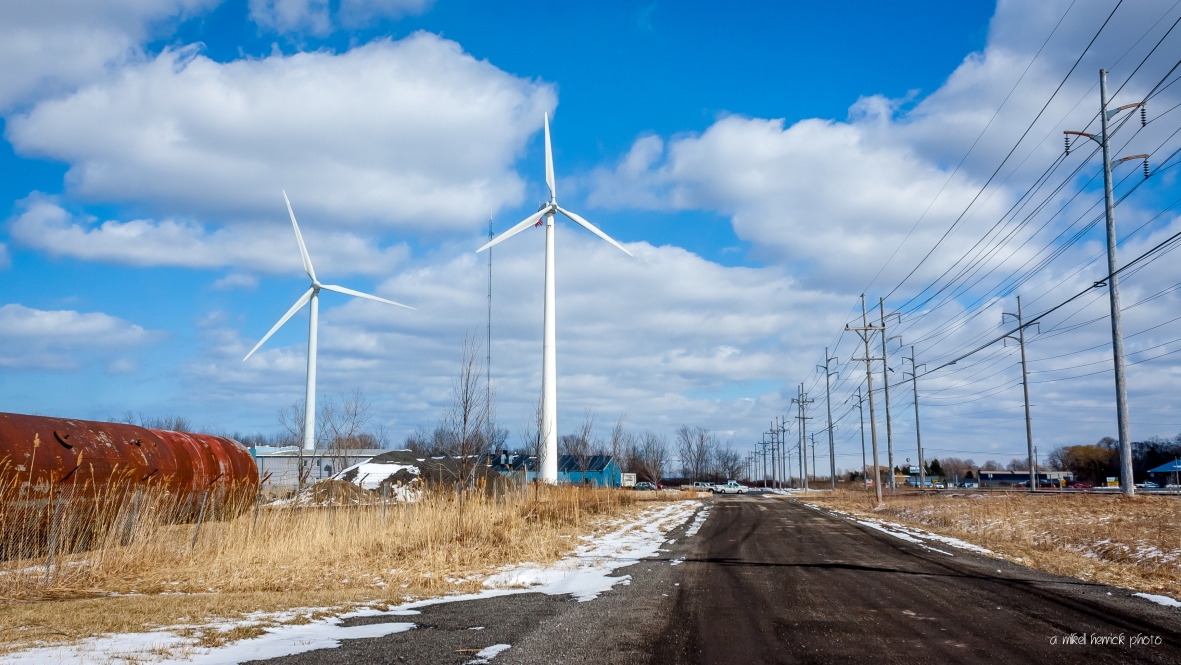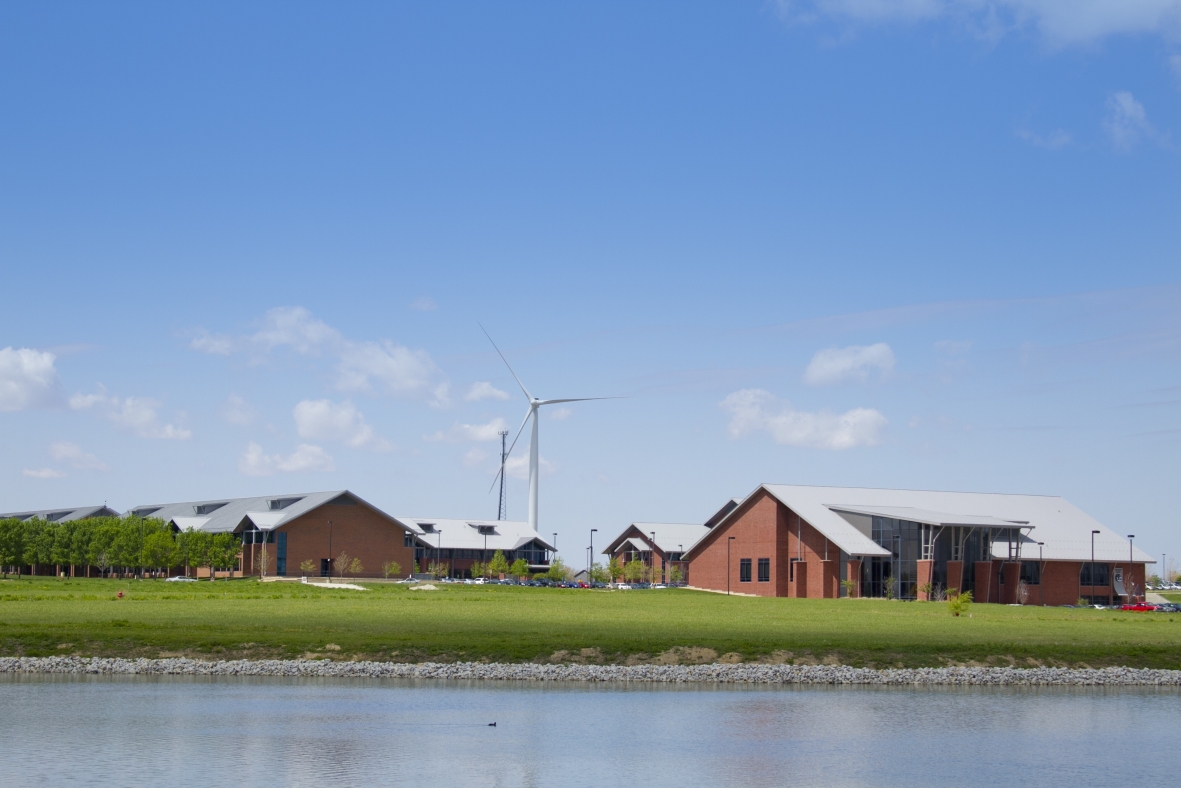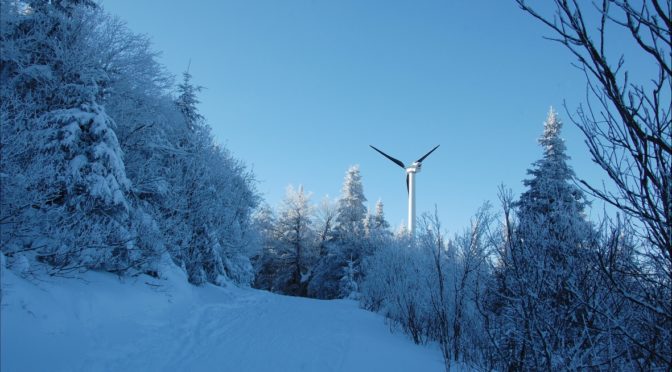Small-Scale Distributed Wind: Northern Power Systems’ 100-kW turbine at the top of Burke Mountain in East Burke, Vermont. | Photo courtesy of Northern Power Systems.


This article is part of the Energy.gov series highlighting the “Top Things You Didn’t Know About Energy.”
9. Distributed wind power is used at or near where it is generated, as opposed to wind power from wholesale generation, where power is sent to consumers via transmission lines and substations. Employed by households, schools, farms, industrial facilities and municipalities, distributed wind doesn’t only refer to small-scale turbines; it includes any size turbine or array of turbines that generates power for local or on-site use.
8. People have used wind energy for more than 2,000 years to pump water and grind grain. In the 19th century, wind-powered water pumps made life possible in arid regions of the United States and Australia by tapping and bringing water to the surface from deep aquifers. Between 1850 and 1970, more than 6 million small wind turbines were installed in the U.S. alone, primarily for water pumping. Read more about the history of wind energy.
7. You can find wind turbines used in distributed applications all across the United States. At the end of 2017, U.S. wind turbines in distributed applications reached a cumulative installed capacity of 1,076 megawatts (MW) from installations using nearly 81,000 turbines across all 50 states, the District of Columbia, Guam, Puerto Rico, and the U.S. Virgin Islands.
6. A large portion of all wind turbines installed in the United States generate power for on-site or local use. On a per-turbine basis, distributed wind installations account for 64 percent of the roughly 126,000 total wind turbines installed in the United States since 2003 and accounted for about 53 percent of all wind turbines installed in the United States in 2017.
5. In Utah, the U.S. Army is using distributed wind in an effort to generate its own renewable energy on-site. There are two wind turbines at the Tooele Army Depot—including a 1.79 MW model made operational in 2016—that meet 60% of the Depot’s energy needs.
4. Faster wind speeds mean more electricity. Wind speeds at 30 meters above the ground–an average height for distributed wind installations—can be found across the country. Check out this residential-scale wind resource map to see how strong winds are in your area.
3. Reducing utility bills and hedging against potentially rising electricity rates are common reasons for installing distributed wind. In addition, many utilities compensate the distributed wind (or other generation) owner for excess energy generated that gets returned to the grid—a practice called “net metering.”
2. As the distributed wind marketplace matures, third parties are providing certification of small and medium wind turbines to ensure turbines perform as advertised. The Interstate Renewable Energy Council lists certified small wind turbines on its website. The U.S. Department of Energy encourages consumers who are interested in purchasing small wind turbines to buy ones that are certified. It should be noted that wind technologies must be installed in specific wind resources to operate as intended.
1. Distributed wind is a homegrown industry that strengthens the domestic economy. As of 2017, U.S.-based small wind manufacturers and their supply chain vendors are located in 27 states, and provided 9498% of the small wind turbines installed in the United States. For more information on the U.S. distributed wind market, check out the 2017 Distributed Wind Market Report. Distributed wind contributes to the growth of U.S. exports. From 2015 through 2017, U.S.-based small wind turbine manufacturers exported over 37 MW of small wind capacity, accounting for more than $226 million in export sales.
Learn More
- Check out the 2017 Distributed Wind Market Report to learn about the distributed wind industry.
- Explore more wind facts in our Top 10 Things You Didn’t Know About Wind.
- Visit energy.gov/windreport to learn about changes to the wind industry in 2017.


